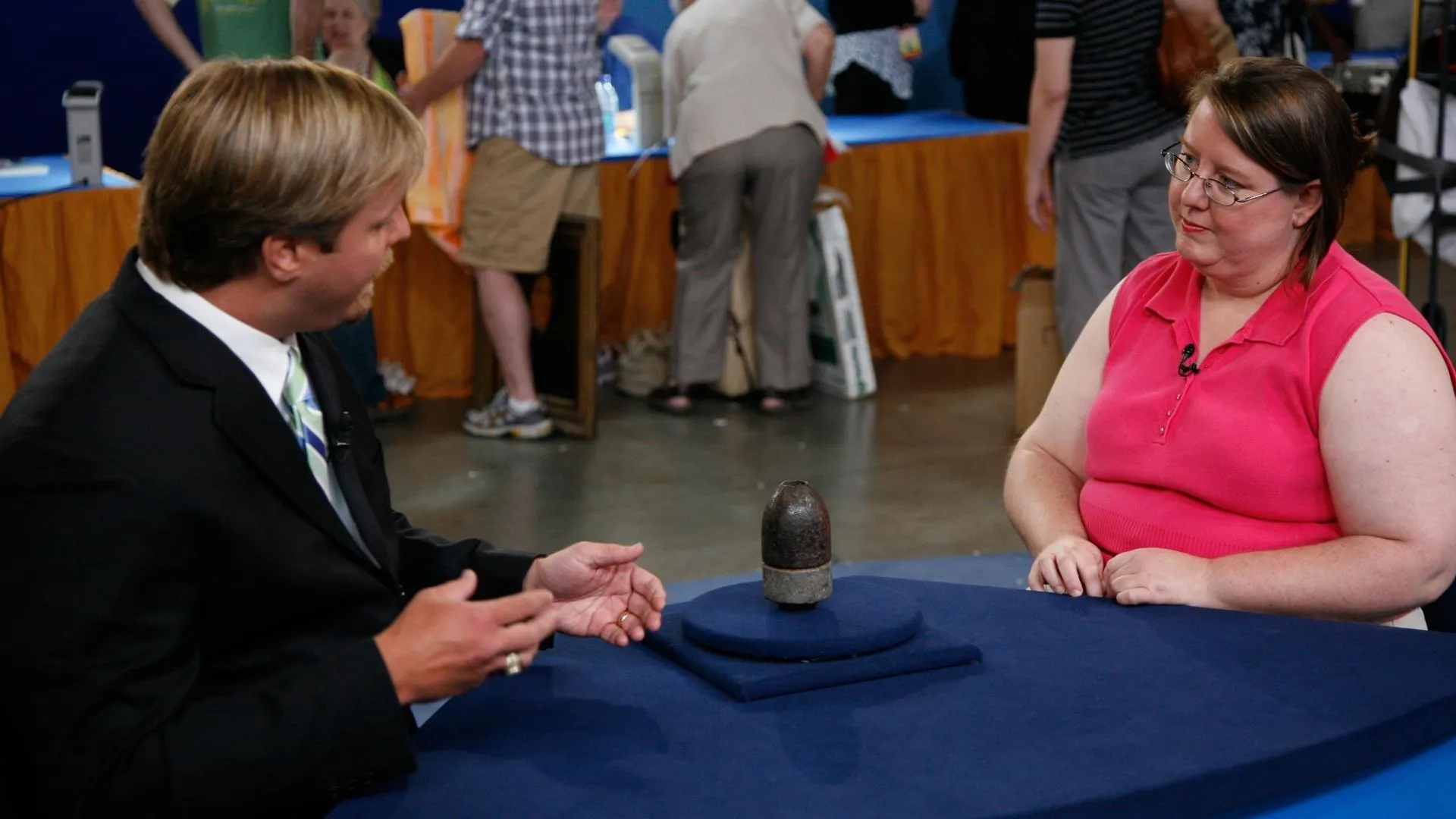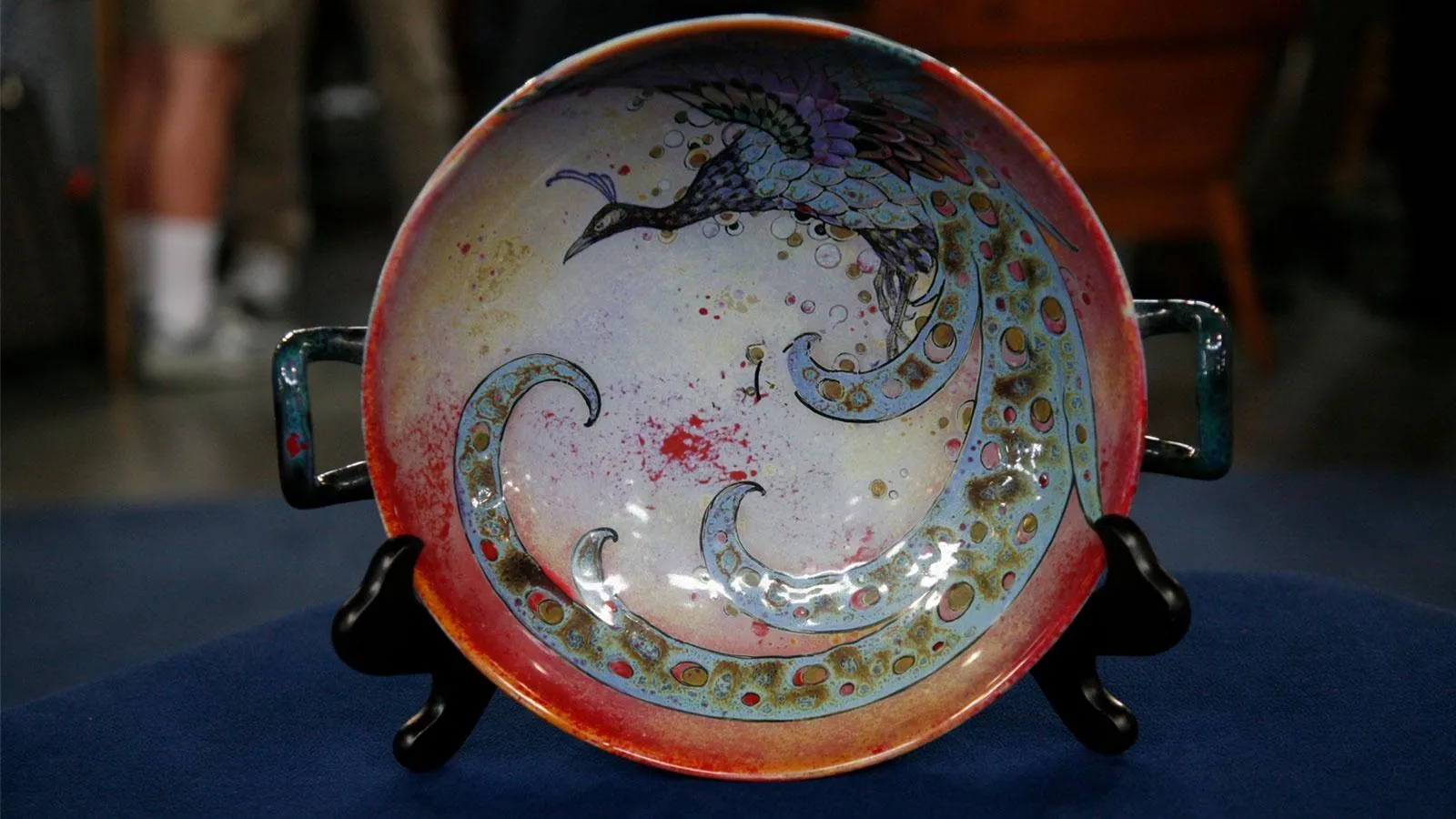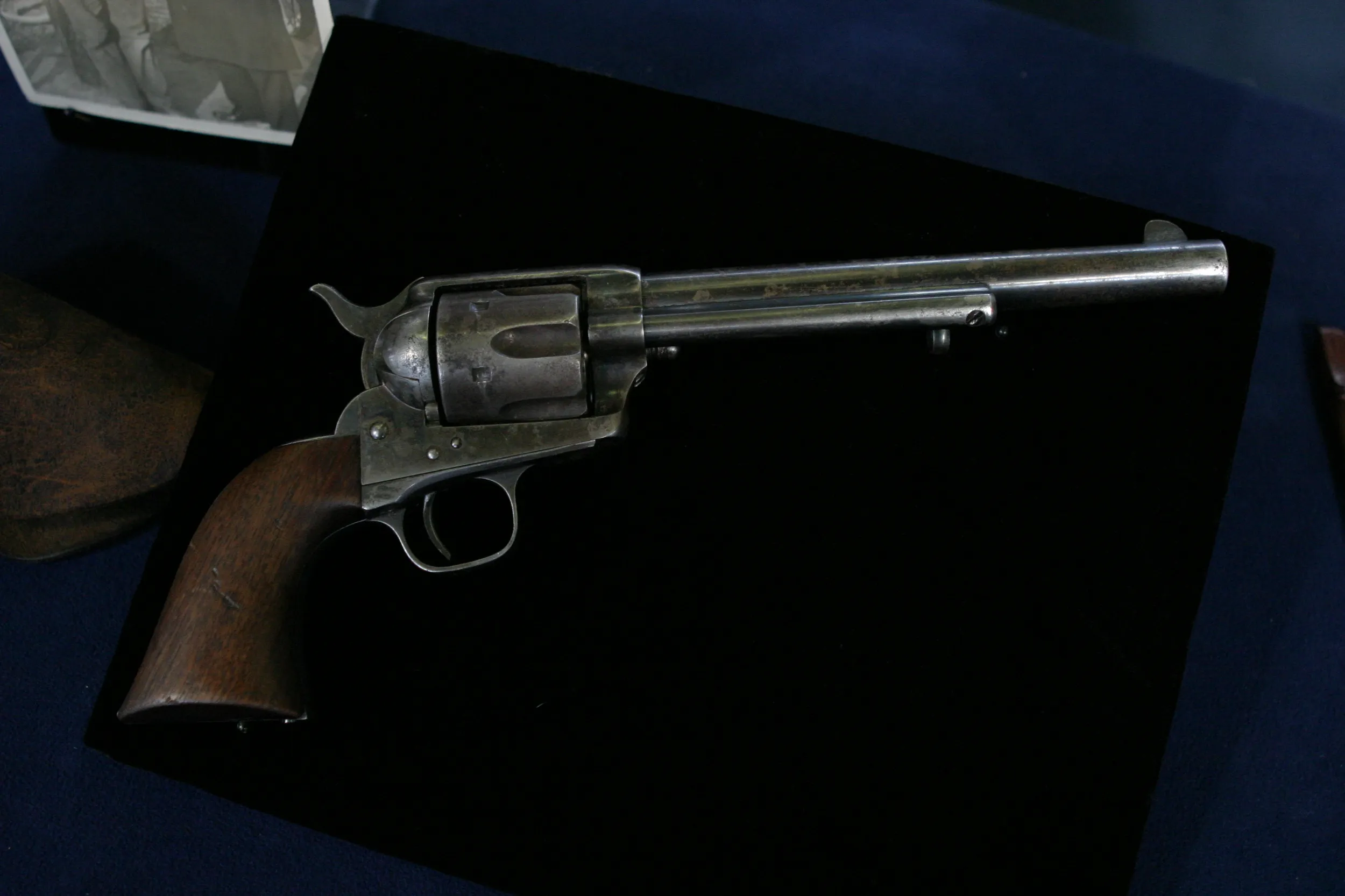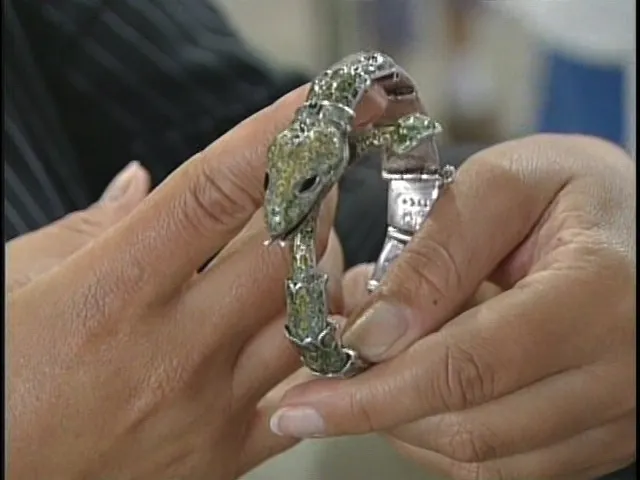GUEST: This is a train set that was my dad's.
APPRAISER: Uh-huh.
GUEST: It was given to him on his first Christmas in December 1930. Obviously, he didn't get to play with it that year, but, uh, it's still used. As a family tradition growing up, my dad had a platform on which we had the tree, and then the train sets went around it. It was in the picture window of our front window and it was so popular, that we even had some of the neighborhood kids would come look at the window
APPRAISER: Mm-hmm.
GUEST: even before they came in to see the train going. So, it's, uh, the engine, we have still have the cars and the original boxes. The condition of the box obviously has deteriorated a little bit, held together with some duct tape.
APPRAISER: And when did you get it?
GUEST: My dad gave it to me a couple of years ago.
APPRAISER: Well, it's a wonderful train, which confirms the fact that most of these trains especially from the Standard Gauge Era, were not bought for children. They were bought by the father to play with. The fathers bought them, ran them for the children, and put 'em in the boxes, put 'em up in the attic, and they came out every year. And that's why a lot of them survive in great condition. Obviously this has been something that has been loved and taken care of. And it's a real treat to see. These trains are not only made out of heavy tinplate, but also cast white metal. And that's also quite unusual, that there's no fatigue. It's in really good shape-- both the castings and the stamped metal. This engine, which is known as the 385E, is one of their more deluxe engines, one of their more valuable ones. Very expensive in their day. Great color, great... all the bits and pieces. A little... couple flags missing here, but that's to be expected. And the tender is equally good condition. And you have a wonderful freight set here. These are not rare cars, but this is a great engine. And the whole set together would easily bring $2,500 to $3,000 at auction.
GUEST: Wow.












